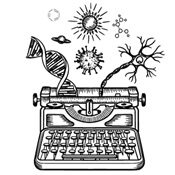Stanford Medicine / Summer 2014 /
One day this spring, Stanford anesthesiologist Divya Chander, MD, PhD, donned her scrubs, washed her hands, and walked into the operating room for a routine surgery. A resident anesthesiologist-in-training had already stuck flat, round electrodes on the patient’s forehead, and wires snaked from the electrodes to an electroencephalography machine beside the operating table.Chander glanced at the machine’s readout, a mountainous terrain of lines pulsing up and down, representing the complexity of information zipping between cells in the brain. These EEG patterns didn’t look like those of an awake person, she thought to herself.
“Oh, have you pushed the anesthetics already?” she asked the resident. He shook his head. Chander frowned, then reached down and shook the patient’s shoulder. Suddenly, the man’s eyes snapped open and the EEG returned to a more expected pattern. He’d been napping.
A decade ago, it’s unlikely that any clinician could glance at the raw squiggly lines of an EEG readout and determine whether a patient was awake or asleep, anesthetized or not. If they had an EEG machine in the operating room at all — a trend that began in the mid-1990s — it likely displayed only some numbers. But now, many neuroscientists and anesthesiologists are tackling an area previously claimed only by philosophers: consciousness. Their research over the past dozen years has begun to illuminate how the brain’s patterns of activity shift as a person’s awareness of their environment changes. By bettering their ability to track consciousness, anesthesiologists hope they can learn how to detect when a patient loses and regains consciousness, fine-tune drug levels to optimize individual patients’ sedation, and develop more effective and safer anesthesia drugs… Read more at Stanford Medicine Magazine.

